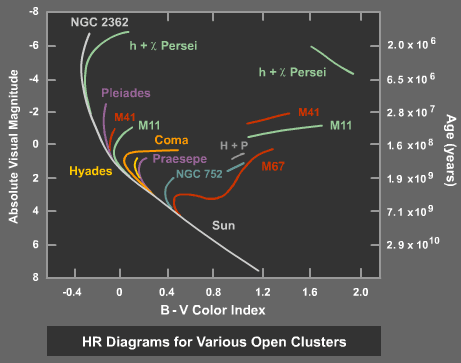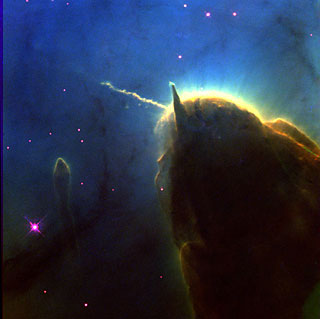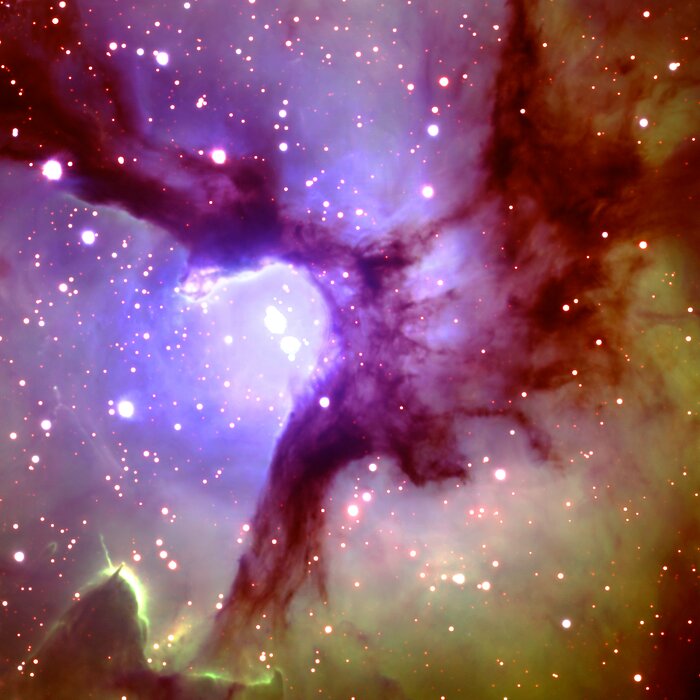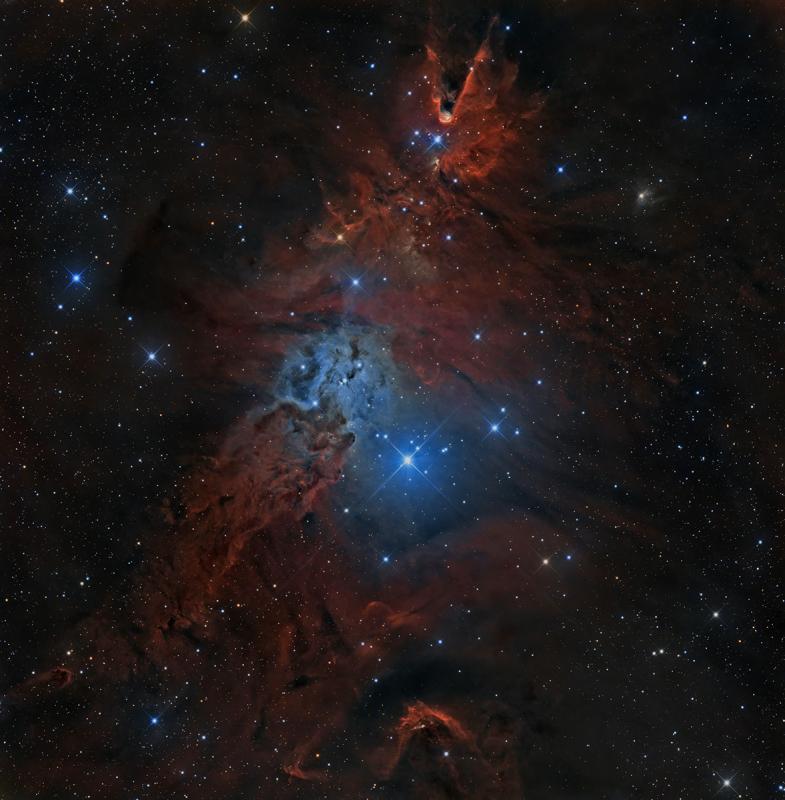Chris Peterson wrote: ↑Mon Jun 05, 2023 2:27 pm
johnnydeep wrote: ↑Mon Jun 05, 2023 1:38 pm
Too many questions for a Monday:
1. Wikipedia thinks the nebula is 4200 ly away (with a reference from 2018), and this APOD thinks it's 9000?
2. The distance should be roughly the same as the distance to the central star (or stars) powering the glow, no?
3. How do they measure the age of a nebula?
4. Wikipedia talks about a "jet" (somewhere), that points to the central star. Where is that jet?
5. And where is that central star?
6. Trifid should really be Quatrofid, now that better imaging clearly shows 4 "lobes" not 3!
For HD 164492A, one of the bright stars that has formed in the nebula, the Gaia DR3 catalog (the best distance reference we have) gives a parallax of 0.684 ± 0.048 mas, which translates to a distance of 1462 pc or 4772 ly, with about a 1% uncertainty.
This is not a planetary nebula, so it has no "central star" as such. The ionization is probably created by a number of bright stars in the cluster.
Chris has given you the best available distance estimate to the Trifid Nebula.
I agree with Chris that we can't talk about a "central star" of the Trifid Nebula, but for all of that, there is a star in the Trifid Nebula (just as there is in the Orion Nebula) that provides most of the ionization of the nebula. In the case of the Trifid Nebula, the star is HD 164492A, a star of spectral class O7.5V, and in the case of the Orion Nebula, the star is Theta 1 Orionis C, a star of spectral class O6V.
How do they measure the age of the nebula? Well, groan. That's a tricky question. One clue is whether the nebula is small, bright, compact and highly ionized, or if it is large, faint, expansive and not so highly ionized. Compare the appearance of the Orion Nebula and the Lambda Orionis nebula, two nebulas that are probably at more or less the same distance from us:
To me it is obvious that small bright Orion Nebula must be younger than large faint Lambda Orionis Nebula, because nebulas disperse over time.
Another clue is the color-magnitude diagram of the cluster of stars inside the nebula. Are there any bright red stars in the cluster? Are the brightest blue stars still on the main sequence? And have the K- and M-type orange and red dwarfs arrived on the main sequence yet?
The youngest of the open clusters in the Penn State University comparison in NGC 2362. However, while this cluster has bright blue stars and no red giants, it is old enough that it has blown away its own birth nebula.
As for the jets in the Trifid Nebula, there are two somewhat famous jets in it. But these two jets don't point at the hot ionizing stars of the Trifid Nebula:
The jets emerge from a fat pillar, similar to the Pillars of Creation in the Eagle Nebula. The pillar in the Trifid points, more or less, at the cluster of hot stars in the center of the nebula.
And where is the brightest star of the Trifid Nebula? Well, I'd say it is probably the brightest star is this (rather old) ESA/Hubble image:
And I agree with you that the Trifid Nebula should be called the Quatrofid, since it clearly has four lobes and not three!

Ann
 In the Center of the Trifid Nebula
In the Center of the Trifid Nebula









